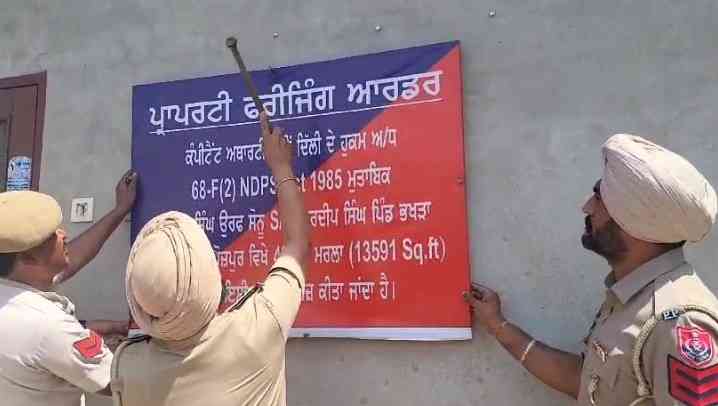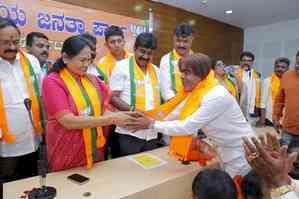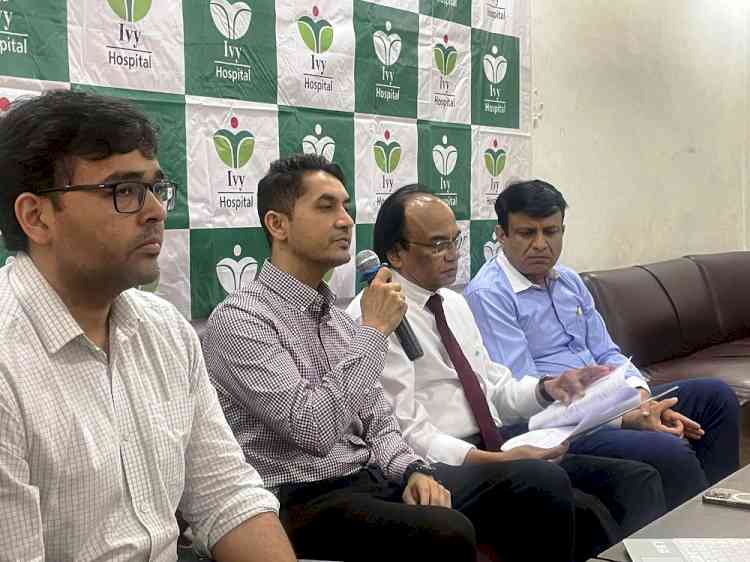(SATURDAY) Digital printing eclipsing Bengal's political graffiti: Artists (Election Special)
Kolkata May 9 (IANS) Witty, satirical, assertive and thought provoking - the art of deyal lekhon (wall writing) or graffiti, an important aspect of Kolkata's political culture and election campaign, is stuck in the doldrums with the advent...

Kolkata May 9 (IANS) Witty, satirical, assertive and thought provoking - the art of deyal lekhon (wall writing) or graffiti, an important aspect of Kolkata's political culture and election campaign, is stuck in the doldrums with the advent of digital printing, art veterans say.
Indian elections are a colourful affair, what with a diverse array of poll merchandise - from customised sweets to umbrellas - adding a new twist to the 2014 Lok Sabha poll.
But in West Bengal, graffiti that use the mundane walls as canvas, in nooks and corners as well as arterial roads, have always been a crucial component of the animated political jargon.
Sample these lines splashed across a wall in a city pocket, courtesy Bengal's ruling party - the Trinamool Congress.
"Eto bonchona, eto lanchona, eto kutsa dheu/Tobu Trinamool Congress'er egiye chola
Rukhte parbena keua (Such deprivation, such accusations and such malicious campaign/
Still can't hinder the progress of Trinamool Congress towards the victory lane)."
Imagine sauntering on a rather sultry day on a busy street and reading this? Didn't it tickle your funny bone and enliven your day?
Similar graffiti, and perhaps the wittiest, adorned the city walls way back in 1967, courtesy the CPI-M.
"Sunleo haansi paey/Congress aabar vote chaey (One can only laugh to know/The Congress is seeking votes you know)."
Another biting one by the Trinamool Congress appeared on the walls in 2009.
"Hate boma, mukhe prem, Eer nam CPI-M (Bomb in hand, love on lips, this is the CPI-M)."
However, digital printing on flexes - polythene sheets used for hoardings and banners - are proving to be graffiti's bane.
Admittedly, it's a faster and much cheaper tool to create a buzz. But it has snatched away the livelihood of graffiti painters and the next generation is far from willing to take it up.
Renowned artist Suvaprassana, chairman of Athe West Bengal Heritage Commission told IANS: "In countries like Germany, and cities like California, wall art has acquired a cult status despite the digital age. However, in Bengal what we are seeing is the regression of the art form."
Flex printing is everywhere and this has severely impacted the artists. The veterans have passed away and their descendants don't wish to continue because it doesn't generate as much money as the digital printing business."
The concept of litho posters has also taken a beating at the hands of technology, Suvaprassana pointed out.
The graffiti artists employed during the elections are usually art students and are rarely political party workers. Often different political parties engage the same artist.
Congress candidate and veteran painter Samir Aich pointed out the loss of the personal touch in flexes, which now hold sway even in semi-urban and rural areas.
"Because of the mass-production of slogans and designs, there is neither a personal touch nor artist's touch," Aich told IANS.
"The skill is dying out...like every art form, graffiti in Bengal is going through a period of turmoil," he added.
Crisp, mocking, educative and cartoonish, they have been used by parties to stir the dust on controversial issues-an effective way to attack the opponent.
Just the presence of these lines on boundaries around permissible areas for the duration of the polls can leave a lasting affect on your thinking.
"Diesel, petrol, rannar gas'er daam bariye/koti koti takar dur-neeti kore/Congress
vote chaaye kon mukhe? (So high have the prices of diesel, petrol and LPG become/
After looting the country/The corrupt Congress asks for votes, how come?)"
But with the jet-setting lifestyle keeping people on their toes, Aich observed that residents have lost their sense of humour, which reflects on the dwindling popularity of graffiti.
"People are more argumentative and this shows on the graffiti," Aich said.
Both Aich and Suvaprasanna contended that even though it could be promoted, the spontaneity needed for graffiti to survive is difficult to achieve without people and artists actually "wanting" to start the process all over again.
"Every art form is born out of a revolution and a human desire to express themselves through art. Unless that is present, graffiti will only be a thing of the past," said Suvaprasanna, adding it is still popular in slums and areas where technology has not destroyed the urge to feel and paint.
(Binita Das can be contacted at [email protected]; Jinia Bose can be contacted at [email protected])

 cityairnews
cityairnews 















